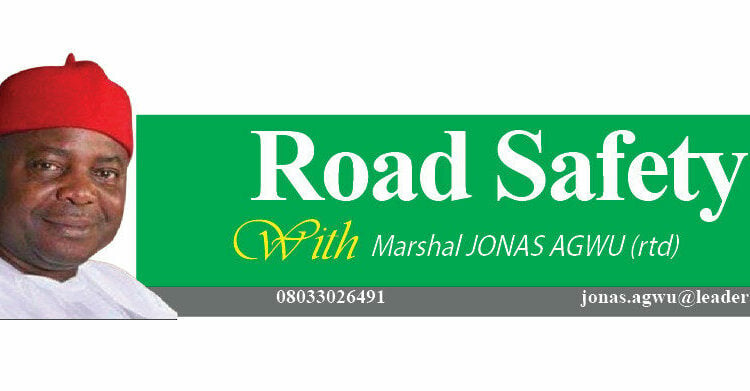What is your agenda for the 2025 Ember Months? Do you have one? Do you even think about it? Do you have a travel plan, or are you just counting down the days until you hit the road for another Christmas celebration?
If you’ve never had a plan or agenda, I suggest developing the habit of having one. I’m talking about a safe travel agenda, especially for those who are freaked out about traveling home for Christmas.
I know we’ve survived the first month of the Ember Months, which is September. The Ember months usually refer to the calendar months of September to December, during which there’s a higher incidence of avoidable road traffic fatalities and injuries due to several reasons.
One reason is increased motorisation due to the absence of an effective integrated transportation system, which leads to over-reliance on road transportation. Another reason is unchecked, irresponsible, and reckless driving behavior that becomes more pronounced during this season. Impatience and the “Do you know who I am?” syndrome are also problems.
There’s also the preponderance of vehicles that don’t meet minimum safety standards, as well as compromises in enforcing strict traffic rules over time in the run-up to the festive season. I know we’ve survived September, but did you read my concluding piece titled “Still on Taming Number Plate Criminals,” where I listed the tragedies that befell operatives of the Federal Road Safety Corps? Did you read the lamentation of the Corps Marshal, Shehu Mohammed, over these deaths? Five deaths all due to recklessness by drivers.
If we were to do a holistic post-mortem of just September that didn’t spare operatives of the Corps, I know the story would be just as tragic for other road users. So, unless drivers tame their driving and safety professionals conduct themselves with great caution, these tragedies might occur again between October and December 2025.
For those who treat safety with levity, please follow my guide on what your agenda should consider. For starters, know that speed thrills, but it also kills. The World Health Organisation identifies excessive and inappropriate speed as a major concern. Checking your speed was my priority this year. Speed is at the core of the traffic injury problem.
According to the WHO, speed influences both crash risk and crash consequences. The physical layout of the road and its surroundings can both encourage and discourage speed. However, crash risk increases as speed increases, especially at road junctions and while overtaking. A good number of road users are guilty of this, even though we would rather blame the other driver for our errors.
For speed freaks, please note these truths: the higher the speed of a vehicle, the shorter the time a driver has to stop and avoid a crash. A car traveling at 50km/h will typically require 13 meters to stop, while a car traveling at 40km/h will stop in less than 8.5 meters.
An average increased speed of 1km/h is associated with a 3% higher risk of a crash involving an injury. Traveling at 5km/h above a road speed limit of 65km/h results in an increase in the relative risk of being involved in a casualty crash that is comparable to having a blood alcohol concentration of 0.05g/dl.
For car occupants in a crash with an impact speed of 80km/h, the likelihood of death is 20 times what it would be at an impact speed of 30km/h. It’s because of the grave risk involved that countries, including Nigeria, set and post speed limits. Controlling vehicle speed can prevent crashes from occurring and reduce the impact with which they occur, thus lessening the severity of injuries sustained by the victim.
In Nigeria, the maximum speed on the expressway is 100km/h for private cars and 90km/h for taxis and buses, while in built-up areas such as commercial and residential areas, the initial speed of 50km/h has now been reduced to 30km/h, as promoted by the United Nations.
I don’t know when you last visited your roadside vulcanizer or the professionals whose business is to service and check alignment and wheel balancing. When you do, you’ll be stunned when the verdict is that one or two of your tires are either incorrectly inflated, worn out, or both.
I’ve told you several times that tire bursts are dangerous killers. I also told you that excessive speed increases the risk of a tire burst due to the added stress and heat generated, potentially leading to a blowout. Tire failure due to excessive speed is commonplace. Both excessive speed and tire burst are dangerous, especially if the tires that influence vehicle handling, braking, acceleration, and overall stability are substandard.
Always remember that incorrect tire pressures are the cause of tire blowouts. Incorrect tyre pressure is the number one cause of tyre blowouts, sudden tire failures, and premature tire wear. Incorrect tire pressure is an invitation to disaster, even if the tyres are brand new. It’s a time bomb waiting for the right time to explode. The implication is that each time such a vehicle is driven, the occupants are facing grave dangers without being aware.
Your priority should be to ensure your tires are standard. Secondly, you must also ensure that you do the needful, such as avoiding incorrect tire pressures responsible for tyre blowouts.





